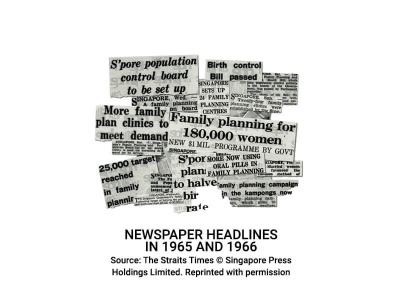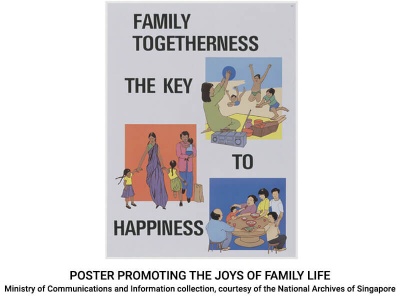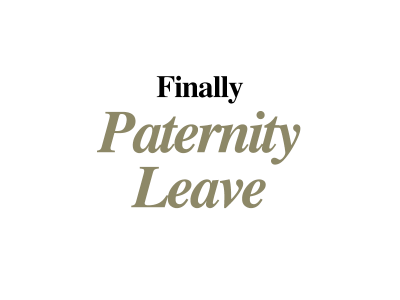Our Perplexing Population Problem
In 1965 Singaporeans were reproducing with gusto – one baby was born every 11 minutes on average. The total fertility rate (TFR) was a whopping 4.66, and the maternity wards could barely cope. A mass family planning programme was launched and by the mid-70s the baby-making had slowed down. As the economy expanded rapidly, Singaporeans’ priorities shifted. Widening access to education gave women options beyond the home. There were jobs aplenty in the factories and offices that were sprouting up. People moved out of sprawling, extended family homes and into nuclear-family HDB flats. They had less time and inclination for large families. In 1975, the TFR was down to 2.1, which is the replacement level. And it kept on falling.

1965
With one baby being born on average every 11 minutes, policymakers worry about the impact on Singapore’s limited resources. The government announces a 5-year mass family planning programme to bring birth control to married women aged 15 to 45.

1966
Kandang Kerbau Hospital handles 39,835 deliveries – a record number that gets the hospital into the Guinness Book of Records for the largest number of births in a single maternity facility. It holds this record for 10 yearsThe Singapore Family Planning & Population Board is set up to bring the birth rate down to replacement level.


1970
Realising that many women, desperate after bearing innumerable children, were resorting to dangerous illegal abortions, the government makes abortion legal. Initially, women have to get approval for an abortion. In 1974, the approval requirement is lifted and women gain full control over their reproductive rights.

1972
The ‘Stop at Two’ campaign is launched. Posters put across the message that smaller families mean a brighter future, and that ‘Girl or Boy, Two is Enough’. Meanwhile, couples who have more than two kids face higher childbirth fees and other disincentives.

1975
The ‘Stop at Two’ campaign has the desired effect. The TFR is down to 2.1. But the planners fear that the baby boomers, who are now reaching the age of marriage, will begin to have children. So the campaign continues.

1980
The baby boomers do not seem inclined to have children in large numbers, and the TFR is down to 1.82.

1983
In his National Day Rally speech, Prime Minister Lee Kuan Yew points to the lopsided patterns of procreation. Graduate women are marrying later, or not at all, and are having fewer babies. This is dangerous for Singapore’s talent pool, he says. A slew of policies to encourage educated women to marry and have children, and less educated couples to stop at two, follows.

1987
In 1986 the TFR falls below 1.5. A new family planning slogan is announced — 'Have three or more, if you can afford it'. Instead of disincentives against having more than two kids, there are now schemes to encourage more babies.

1990
The publicity campaigns focus on the joys of having children and families, but to little avail. The TFR keeps dropping.

2001
The Baby Bonus scheme offers cash grants to new parents. It is part of the 1st Marriage and Parenthood Package (M&P). The package includes helping couples get a home more quickly, and increasing infant and childcare facilities. The TFR slides below 1.5.

2004
The 2nd M&P is announced, with a third in 2008. Women’s groups and others continue to say that it is not enough to offer all these incentives. Attitudes need to change. Fathers must play an equal part in parenting.

2013
In the 4th M&P, finally, the father’s role is acknowledged. Paternity and shared parental leave is introduced. Fathers can claim 1 week of paternity leave, and share 1 week of their wife’s maternity leave.

2017
Paternity leave increases to two weeks. Shared parental leave goes up from one to four weeks. But the TFR still keeps falling.

2019
The efforts to encourage more babies continue. The 45-year age limit for women to undergo IVF is removed, and more generous childcare subsidies are announced. The TFR hovers below 1.2, and immigration is what keeps the population from shrinking.As the population ages, more attention is paid to the needs of older Singaporeans, especially women who quit their jobs to look after family members and who may thus have inadequate resources for their old age.


